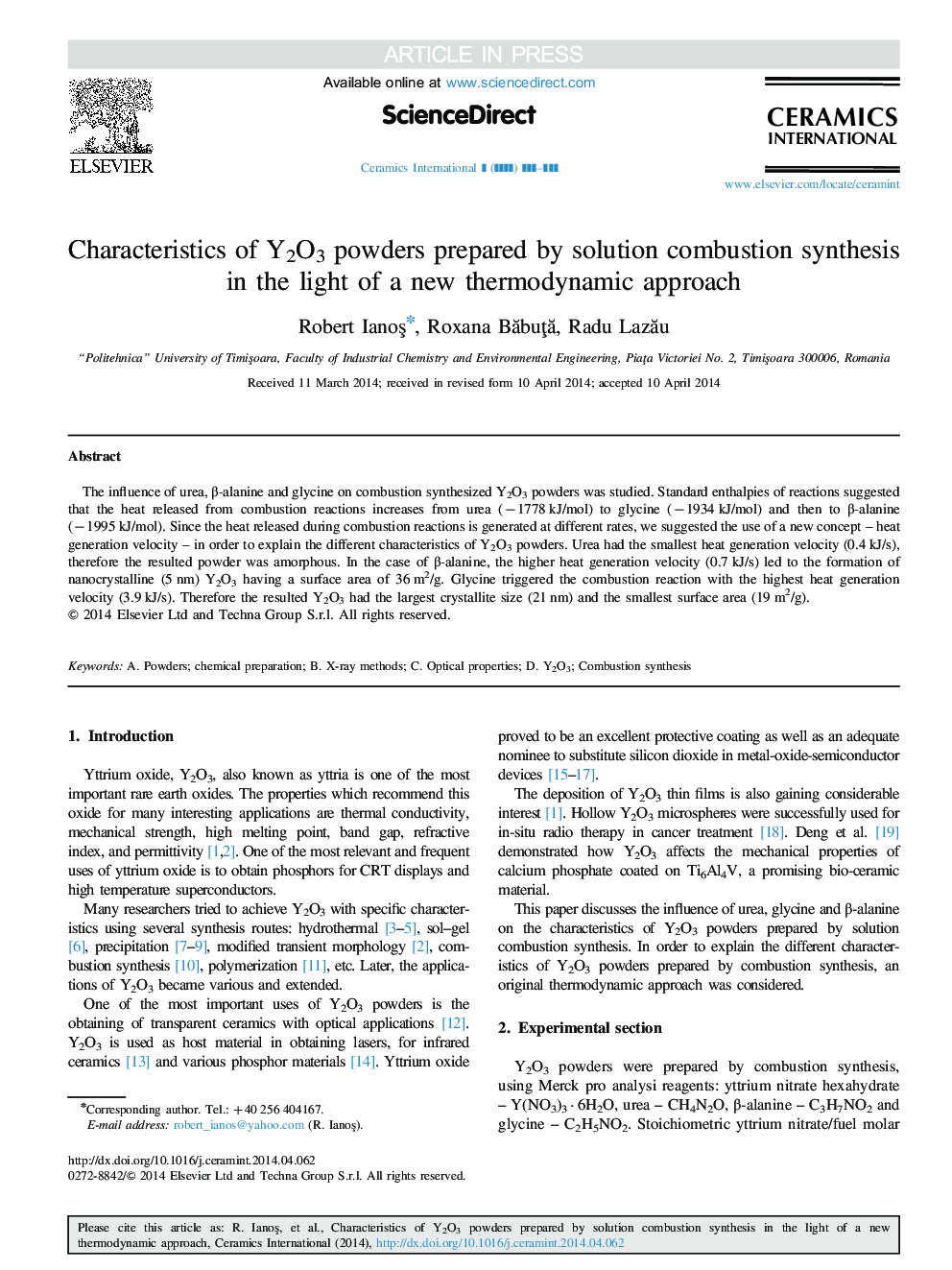| Article ID | Journal | Published Year | Pages | File Type |
|---|---|---|---|---|
| 10625525 | Ceramics International | 2014 | 5 Pages |
Abstract
The influence of urea, β-alanine and glycine on combustion synthesized Y2O3 powders was studied. Standard enthalpies of reactions suggested that the heat released from combustion reactions increases from urea (â1778 kJ/mol) to glycine (â1934 kJ/mol) and then to β-alanine (â1995 kJ/mol). Since the heat released during combustion reactions is generated at different rates, we suggested the use of a new concept - heat generation velocity - in order to explain the different characteristics of Y2O3 powders. Urea had the smallest heat generation velocity (0.4 kJ/s), therefore the resulted powder was amorphous. In the case of β-alanine, the higher heat generation velocity (0.7 kJ/s) led to the formation of nanocrystalline (5 nm) Y2O3 having a surface area of 36 m2/g. Glycine triggered the combustion reaction with the highest heat generation velocity (3.9 kJ/s). Therefore the resulted Y2O3 had the largest crystallite size (21 nm) and the smallest surface area (19 m2/g).
Keywords
Related Topics
Physical Sciences and Engineering
Materials Science
Ceramics and Composites
Authors
Robert IanoÅ, Roxana BÄbuÅ£Ä, Radu LazÄu,
